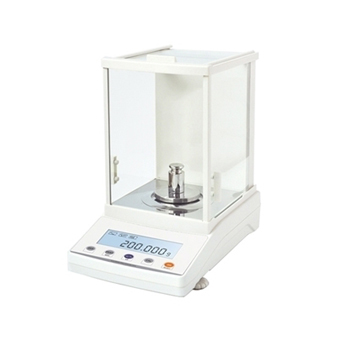What is an Electronic Analytical Balance?
In the realm of precision measurement and scientific research, an electronic analytical balance is an essential tool that plays a pivotal role in achieving accurate and reliable results. This blog post explores what an electronic analytical balance is, how it works, its applications, and why it is a crucial instrument in various fields.
Basic Knowledge
Electronic balances are used for measuring the mass of objects. Electronic balances typically employ strain gauge sensors, capacitive sensors, or electromagnetic balance sensors. Strain gauge sensors are simple in structure and cost-effective but have limited accuracy.
Before 2009, they could not achieve very high accuracy. Capacitive sensors offer quick weighing speeds and relatively good cost-effectiveness but cannot reach very high accuracy. Electronic balances using electromagnetic balance sensors are known for their accurate and reliable weighing, fast and clear displays, automatic detection systems, simple automatic calibration devices, and overload protection features.

Classification
Electronic balances and their classifications can be divided into the following categories according to the accuracy of electronic balances:
- Ultra-micro electronic balance: The maximum weighing capacity of an ultra-micro balance is 2 to 5 g, and its scale graduation value is less than the (maximum) weighing value of 10-6.
- Microbalance: The weighing range of a microbalance is generally 3 to 50g, and its graduation value is less than the (maximum) weighing value of 10-5.
- Semi-micro balance: The weighing of a semi-micro balance is generally between 20 and 100g, and its graduation value is less than the (maximum) weighing value of 10-5.
- Constant electronic balance: The maximum weighing of this kind of balance is generally between 100 and 200g, and its graduation value is less than the (maximum) weighing 10-5. For example, the ATO-EAB-200 electronic balance in the ATO store is a constant electronic balance.
- Precision electronic balances: This category includes electronic balances with accuracy levels classified as Class II.
Performance Parameters
Electronic balances are evaluated based on four performance parameters: stability, sensitivity, accuracy, and repeatability. Stability refers to the precision of the balance, sensitivity to how quickly the balance responds to changes in weight, accuracy to the correctness of the displayed values, and repeatability to the stability of the displayed values, indicating how little they fluctuate. Smaller fluctuations in displayed values indicate better repeatability.
Stability of Electronic Balance Readings
The stability of electronic balance readings refers to the consistency of measurement results when the same object is weighed multiple times under the same conditions. It includes parameters like repeatability, reproducibility, zero-setting errors, and drift in electronic balance readings under loaded or unloaded conditions within a specified time.
- Accuracy of electronic balances: The accuracy of electronic balances represents their ability to provide readings close to the true value. From an error perspective, it reflects the magnitude of systematic errors in balance readings.
- Sensitivity of electronic balances: Sensitivity refers to the balance's ability to detect changes in the mass of objects placed on its weighing pan. Sensitivity can be expressed through angular sensitivity, linear sensitivity, division sensitivity, or digital sensitivity. For electronic balances, division sensitivity or digital sensitivity is commonly used. A more sensitive balance can detect smaller changes in mass, making sensitivity a crucial performance parameter for electronic balances.
- Stability of electronic balances: The stability of electronic balances indicates their ability to return to their initial equilibrium position after being subjected to disturbances. Electronic balances typically display their equilibrium positions through analog or digital readings. If an electronic balance can return to its original reading after a momentary disturbance, it is considered stable. Stability is a critical factor for determining the suitability of electronic balances for use. Balances lacking stability cannot be used effectively.
These performance parameters are essential considerations when using electronic balances, and they determine the quality and reliability of the measurements taken with these instruments.
Applications of Electronic Analytical Balances
Electronic analytical balances are used in a wide range of scientific and industrial applications where precise measurements are critical. Some common applications include:
- Laboratory Research: Analytical balances are indispensable in chemical, pharmaceutical, and biological laboratories for accurately weighing reagents, samples, and compounds.
- Quality Control: Manufacturing industries rely on analytical balances to ensure product quality by measuring and verifying the consistency of ingredients and materials.
- Environmental Analysis: Environmental agencies and research institutions use analytical balances to measure pollutants, contaminants, and environmental samples.
- Pharmaceuticals: In pharmaceutical research and production, analytical balances are used to measure active ingredients, excipients, and formulations with the utmost accuracy.
- Food and Beverage: The food industry employs analytical balances for recipe formulation, quality control, and nutritional analysis.
- Material Testing: Analytical balances are used in materials testing to determine the properties of construction materials, metals, and composites.
- Education: They are used in educational institutions for teaching and laboratory experiments in chemistry and physics.

Why Electronic Analytical Balances Are Crucial
Electronic analytical balances offer several advantages, making them crucial instruments in various fields:
- Precision: These balances provide extremely accurate measurements, essential for research, quality control, and compliance with regulatory standards.
- Speed: They offer rapid results, increasing efficiency in laboratories and production settings.
- Digital Readout: Digital displays eliminate reading errors and ensure ease of interpretation.
- Tare Function: The tare feature allows for the subtraction of container weights, simplifying measurements.
- User-Friendly: Modern electronic analytical balances come with user-friendly interfaces and various functions for improved usability.
Electronic analytical balances are the cornerstone of accurate measurements in scientific research, quality control, and various industries. Their high precision, ease of use, and versatility make them invaluable tools for achieving reliable results and ensuring the quality and safety of products and processes. Understanding the role and functioning of electronic analytical balances underscores their importance in the pursuit of precision and excellence in measurement.

